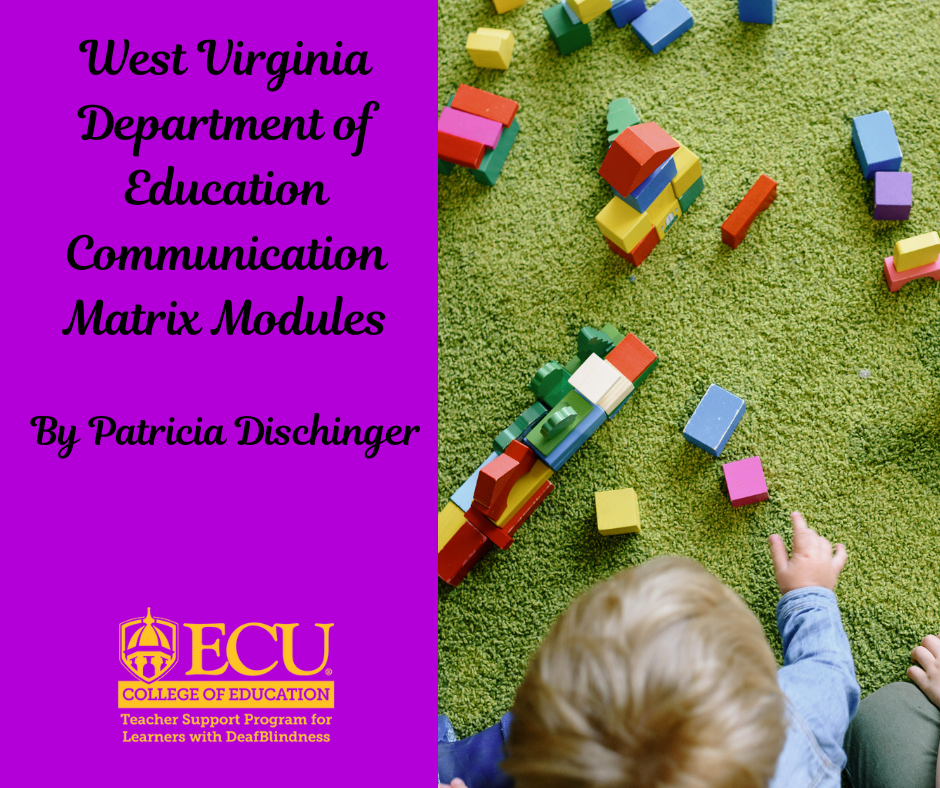by Patricia Dischinger
Most of us are familiar with the Communication Matrix and have used it as an assessment tool to determine a level of expressive communication for our learners with complex needs and/or DeafBlindness. The Communication Matrix rates the level of communicative competence the learner is using to express the four basic reasons for communication; to refuse, to obtain, to engage socially, and to seek information. Using the Communication Matrix Chart, the learner’s teachers and parents can see which forms of communication the learner is currently using and which ones are emerging or not yet used.
I have heard many teachers express the concern that they understand how to use the Communication Matrix as an assessment tool but not how to use it to develop intervention goals. Because this concern has been raised again and again by teachers using the Communication Matrix, the West Virginia Department of Education funded a grant to develop modules to help teachers with this issue.
The professionals who developed the modules were Lee Ann Brammer, M.A., CCC-SLP, Annette Carey, M.Ed., Ruth Ann King, M.ED., Karen B. Haines, M.S., CCC-SLP, Nancy K. Steele, M.A.ED., Martha Veto, M.ED., TVI and Heather Boyle, M.Ed., TVI. They wanted to provide teachers with a guide to creating intervention goals from the Communication Matrix results.
The modules are divided into several sections; a Foundation for Intervention section which provides tips on administering the Communication Matrix, Essential Strategies, which gives an overview of the essential strategies that must be embedded at all levels of intervention such as trusting relationships, routines, and individual interest and then sections for each communication level 1-7. Every module has a video to watch and provides a long list of resources for that module’s topic which would be great to share with parents and other professionals working with the learner.
There is so much information available in these modules it would be impossible to describe it here. Here is just one example of the helpful information you can find when working with a learner at any level of the Communication Matrix. It is from a chart showing strategies to continue, strategies to introduce and tools to use for the learner who is at level 2 Intentional Behaviors.
Strategies to Continue
Routines
Wait Time
Touch Cues
Contingency Games
Hand Under Hand
Strategies to Introduce
Object Cues for Receptive Communication
Establishing Intentional Behavior
Tools to Use
Pre-symbolic Signal Dictionary
My Cue Dictionary
Embedding Goals into Routines
These strategies are explained, and examples are given in the videos, planning tools lists and resources lists.
If you have learners who you are evaluating with the Communication Matrix, please click on the link below and check out this gold mine of information that will show you how to develop intervention strategies that will help your learner progress to higher levels of communicative abilities!


This review on the new tool to utilize the Communication Matrix is very helpful. I will visit the WVDE website to explore these new modules.
Thank you!